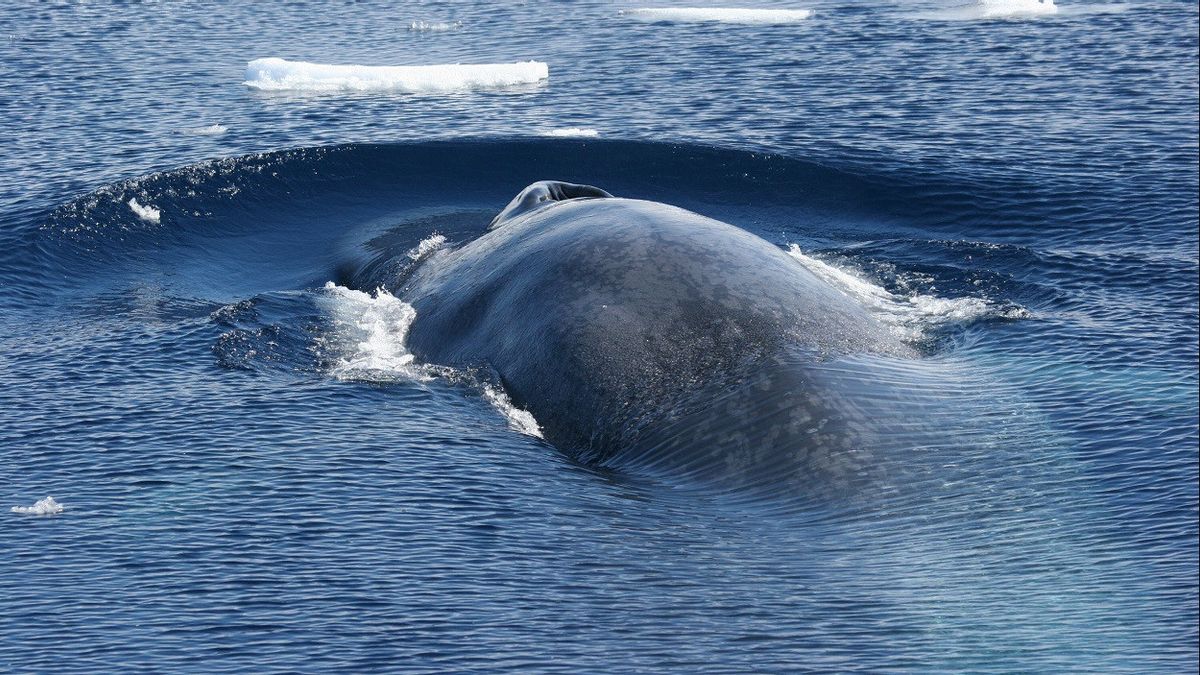JAKARTA - Families of whale marine mammals, ranging from blue whales, fin whales, bowhead whales, gray whales toek whales are known to be the largest living animals today, with blue whales being the largest creatures ever known on Earth even said to exceed dinosaurs.
How does this amazing marine mammal become so great? A new study explores the genetic foundations of gigantisme in whales, identifying four genes that seem to play an important role.
The genes, the researchers said, not only help in driving large sizes but also in reducing harmful consequences, including higher cancer risks and lower reproduction results.
Cetacea, a group of marine mammals that include whales, dolphins and porpoise, evolved about 50 million years ago from a wolf-like ground-based ancestor belonging to a collection of mammals called artiodactyls, including cows, pigs, sheep, and many others today.
"The body's size is the complex result of many genes, pathways as well as physical and ecological processes," said genetics expert Mariana Nery of Universidade Estadual de Campinas (UNICAMP) in Brazil, co-author of the study published Thursday in the journal Scientific Reports..
"Our results include the first to study gigantisme at cetacea from a molecular perspective," he said.
The study focused on seven whale species that were 33 feet (10 meters) long. Six are baleen whales, which eat small prey using a mouth filtering system that involves balin plates made of the same substance found in human nails. The sperm whale is a toothed whale hunting for large prey such as a giant squid.
It is known that blue whales can reach a length of about 100 feet (30 meters), fin whales about 80 feet (24 meters), sperm whales and bow heads about 60 feet (18 meters), bow and right whales about 50 feet (15 meters) and gray whales about 45 feet (13.5 meters).
After assessing nine genes including some associated with increased body size in other mammals, the researchers found that four genes named wayR, IGFBP7, NCAPG and PLAG1, appeared to have become famous during the evolution of large whales.
ER is a gene involved in releasing the growth hormone through hypophysis glands, weight, energy metabolism, appetite, and fat buildup. This is also related to controlling cell proliferation and programmed cell death.
Meanwhile, IGFBP7 is a gene involved in driving cell growth and division. There is evidence that it acts as a suppression of cancer in prostate tumors, breasts, lungs and colorectal.
Next, NCAPG, a gene related to human growth, horses,▁betuls, cows, pigs, and chickens, is related to increased body size, weight gain, cell proliferation, and cell life cycle.
Lastly, PLAG1, a gene related to body growth in cows, pigs, and sheep, is involved in embryo growth and cell survival.
"Gilaantisme in the cetacean line is currently around 5 million years ago. Previously, there were large animals, such as Basilosaurs, but these were exceptions, and most cetaceans of length did not exceed 10 meters," explained study lead author Felipe Andre Silva, who worked on his master's degree in genetics and molecular biology at UNICAMP.
"Gilaantisme can bring some advantages such as lower opportunities to be eaten and greater chances of getting food," Silva added.
It is known, Basilosaurs, the toothed top predator of about 40 million years ago, was the largest ancient whale known. The Silsilah of the baline whale originated about 36 million years ago, starting from a simple size.
"Evolution cetacea is a fantastic story, because these big and charismatic animals are attracting the attention of many people," said Nery.
"But beyond the curiosity it causes, these animals can teach us a lot about the evolution process itself. And whales have proven to be a very interesting model to understand how biodiversity is generated, helping to answer fundamental questions in evolutionary biology."
The English, Chinese, Japanese, Arabic, and French versions are automatically generated by the AI. So there may still be inaccuracies in translating, please always see Indonesian as our main language. (system supported by DigitalSiber.id)













